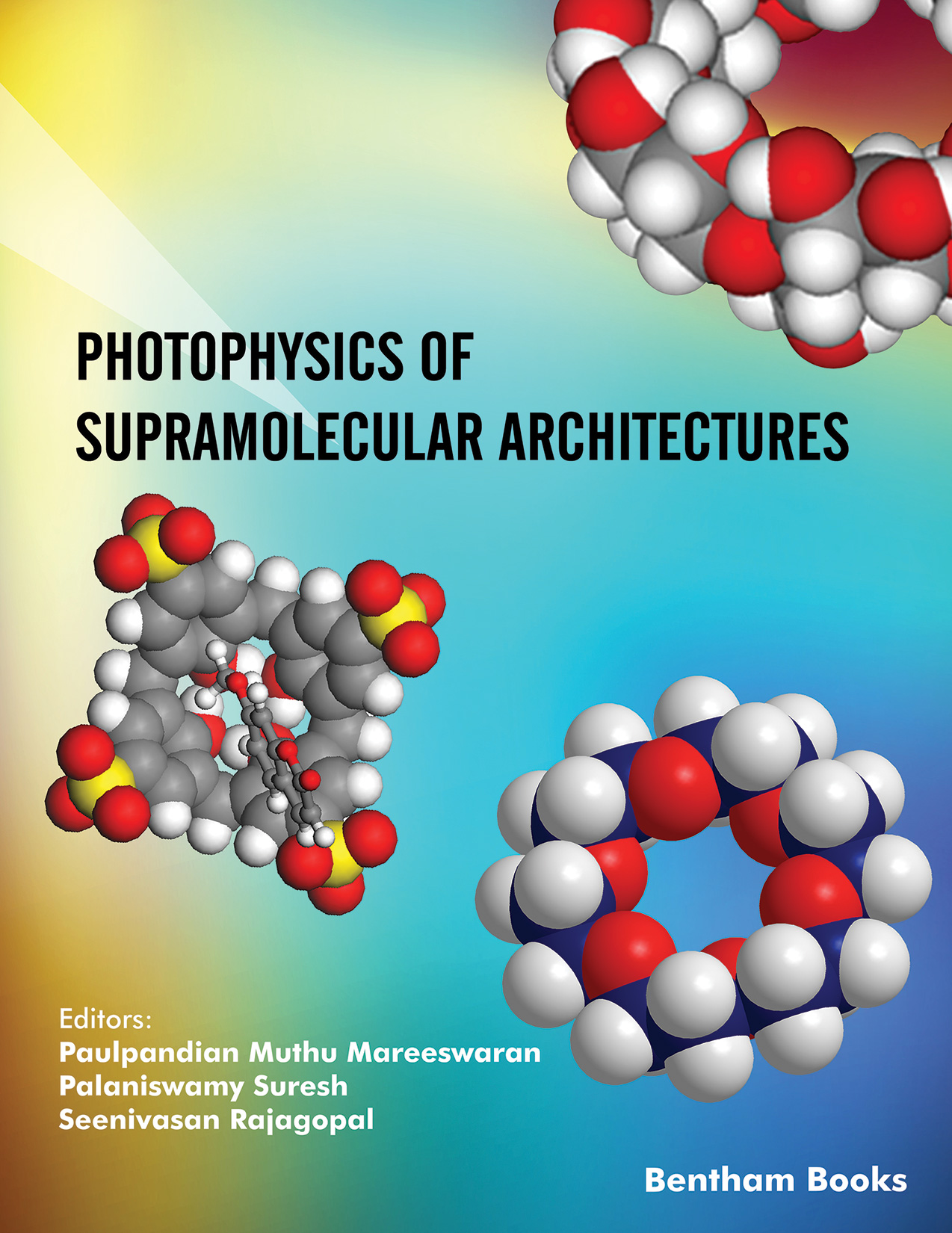Preface
Supramolecular architectures, the prevalent architectures in nature, are designed through a variety of non-bonding interactions like hydrogen bonding, π-π staking, self-assembly, etc. From physics to biology, the functionalities of supramolecular architectures play an important role. For example, life is not possible without a DNA folding or protein self-assembly. This book mainly focuses on cavities containing supramolecular hosts and their photophysical properties by attaching luminescent molecules as guests. The host-guest chemistry is a widely established subject that can expand as an individual field of research with respect to the cavitand. The host-guest chemistry is envisaged as mimic for enzymatic catalysis. Also, they are used as drug delivery vehicles for the targeted payload delivery in biochemistry and biotechnology. The study of the interaction of guest molecules with light in the presence of host molecule opens a research opportunity to develop advanced research like optical tweezers.
The recent studies of photophysics of guest molecules with various cavitands like cylclodextrin, calixarene and their derivatives, cucurbiturils are highlighted in this book. The cyclodextrin complexes having different cavities and encapsulation of fluorescent guest molecules and applications of these systems are elaborately discussed in Chapter 1. Chapter 2 deals with the interaction of fluorescent guest molecules with calixarenes and their applications towards (as) sensors. The photophysical properties of coordinations complexes of calixarene-lanthanide systems are also discussed in this chapter.
Resorcinarenes, one of the important molecules in the calixarene family, receive importance for their hydroxyl group containing upper rim, which makes them suitable for catalysis applications. Chapter 3 mainly focuses on the upper rim modification at hydroxyl group to achieve crown ethers. Eventhough the crown ethers are separately known as supramolecules, this chapter discusses upper rim modified resorcinarene-crown and their applications using optical spectral techniques. Chapter 4 deals with the pillararenes, which are considered as young cavitand molecular system, reported only in 2008. This chapter focuses on the host-guest chemistry of pillararenes with fluorescent guest molecules. The self-assembly of pillarene derivative is also discussed to achieve sensor applications.
Chapter 5 is concerned with the molecular recognition of fluorescent guest molecules encapsulated cucurbiturils and their applications as sensors. The application of imaging and photodynamic therapy using cucurbiturils systems is also discussed. Chapter 6 deals with the control of photophysical properties and photochemical events of various cavities and capsules. Chapter 7 mainly focuses on the cavity containing rhenium(I) metallasupramolecules, i.e., metallacycles. The synthesis, photophysical properties and host-guest behavior of rhenium metallacycles ranging from simple to complex topologies are discussed in detail. Chapter 8 deals with the dynamics of macromolecules functionalized with fluorescent molecules. The macrocyclic environment acts as a host molecule and influences the optical properties of the functionalized fluorescent molecule. The folding and unfolding of macrocycles exhibit substantial variations in the fluorescent molecules.
This book strives to give collectively the applications of host-guest chemistry with recent applications. The recent advancements in the various host-guest systems will provide newer insights to readers into both conventional host molecules like cyclodextrin as well as young host molecules like pillararenes.
Paulpandian Muthu Mareeswaran
Department of Industrial Chemistry
School of Chemical Sciences
Alagappa University, Karaikudi – 630 003
Tamilnadu, India
Palaniswamy Suresh
Department of Natural Products Chemistry
School of Chemistry, Madurai Kamaraj University
Madurai – 625 021, Tamilnadu, India
&
Seenivasan Rajagopal
Department of Physical Chemistry
School of Chemistry, Madurai Kamaraj University
Madurai – 625 021, Tamilnadu, India

